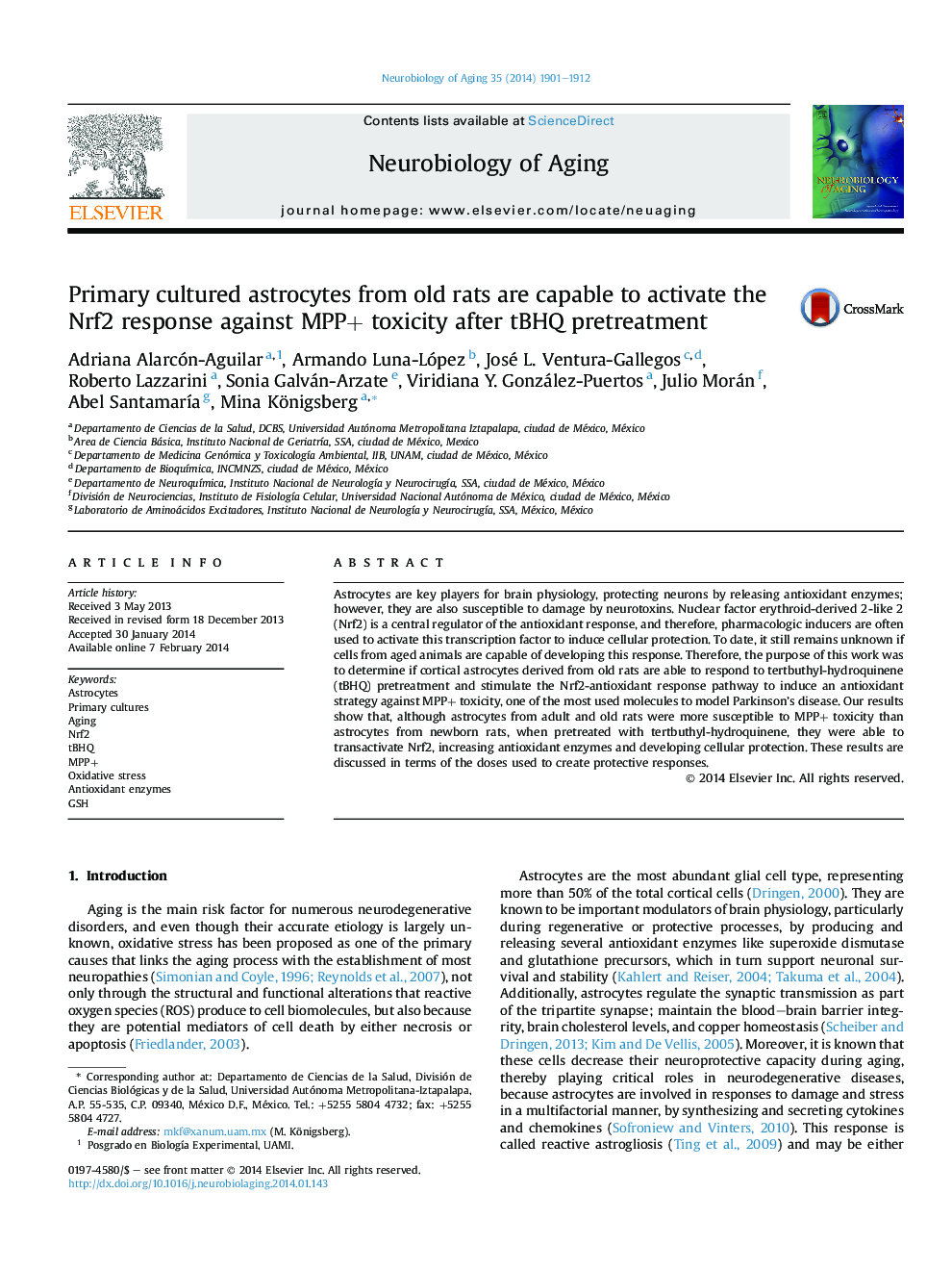| Article ID | Journal | Published Year | Pages | File Type |
|---|---|---|---|---|
| 6805773 | Neurobiology of Aging | 2014 | 12 Pages |
Abstract
Astrocytes are key players for brain physiology, protecting neurons by releasing antioxidant enzymes; however, they are also susceptible to damage by neurotoxins. Nuclear factor erythroid-derived 2-like 2 (Nrf2) is a central regulator of the antioxidant response, and therefore, pharmacologic inducers are often used to activate this transcription factor to induce cellular protection. To date, it still remains unknown if cells from aged animals are capable of developing this response. Therefore, the purpose of this work was to determine if cortical astrocytes derived from old rats are able to respond to tertbuthyl-hydroquinene (tBHQ) pretreatment and stimulate the Nrf2-antioxidant response pathway to induce an antioxidant strategy against MPP+ toxicity, one of the most used molecules to model Parkinson's disease. Our results show that, although astrocytes from adult and old rats were more susceptible to MPP+ toxicity than astrocytes from newborn rats, when pretreated with tertbuthyl-hydroquinene, they were able to transactivate Nrf2, increasing antioxidant enzymes and developing cellular protection. These results are discussed in terms of the doses used to create protective responses.
Related Topics
Life Sciences
Biochemistry, Genetics and Molecular Biology
Ageing
Authors
Adriana Alarcón-Aguilar, Armando Luna-López, José L. Ventura-Gallegos, Roberto Lazzarini, Sonia Galván-Arzate, Viridiana Y. González-Puertos, Julio Morán, Abel SantamarÃa, Mina Königsberg,
